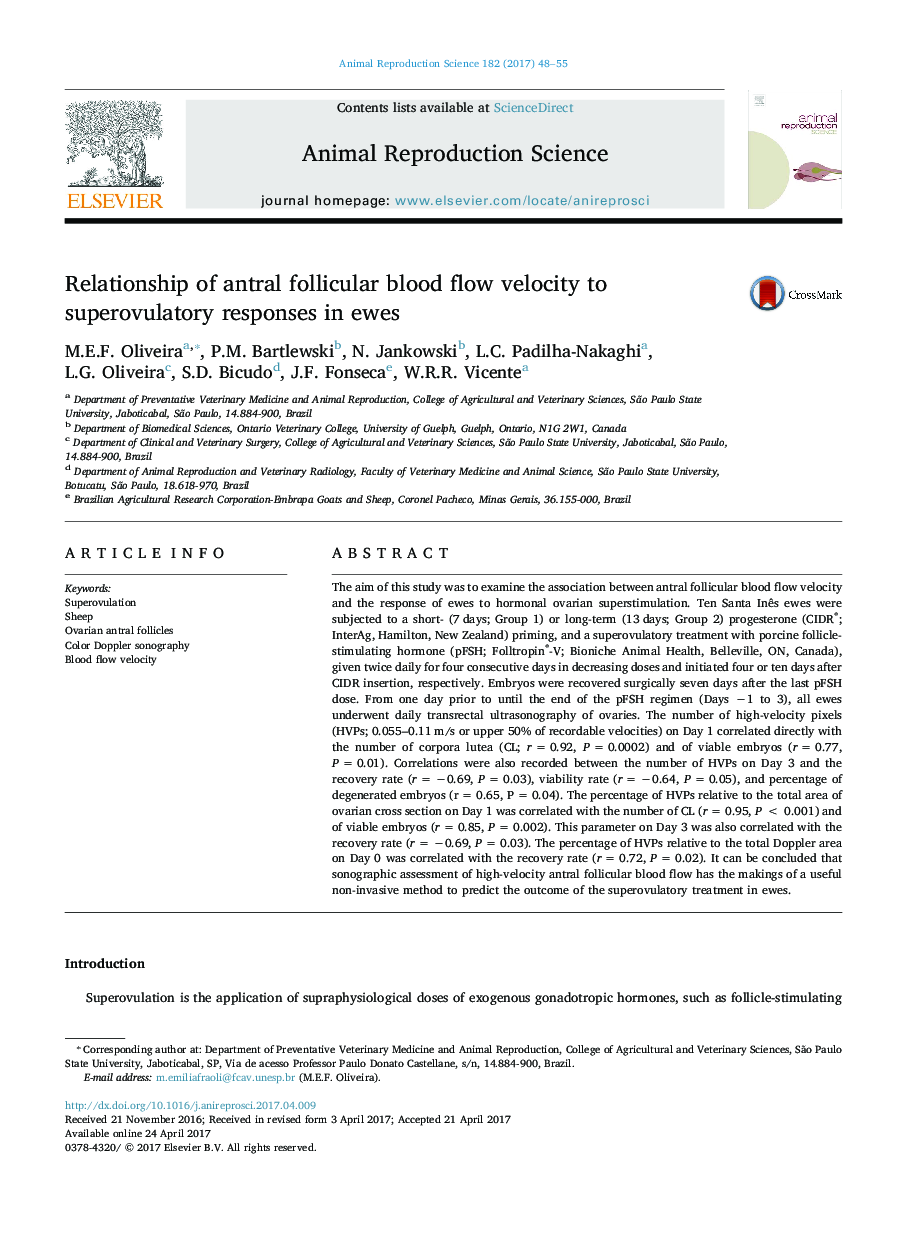| Article ID | Journal | Published Year | Pages | File Type |
|---|---|---|---|---|
| 5520179 | Animal Reproduction Science | 2017 | 8 Pages |
â¢Antral follicular blood flow was assessed throughout the 4-day superovulatory regimen in ewes.â¢High-velocity blood flow (HVBF) was quantified with computerized analyses of color Doppler images.â¢HVBF on the 2nd day of the superovulatory treatment was related to ovulation rates and embryo yields.â¢HVBF on the last day of the superovulatory treatment was indicative of embryo viability.â¢Sonographic assessment of HVBF may permit the prediction of superovulatory outcomes in ewes.
The aim of this study was to examine the association between antral follicular blood flow velocity and the response of ewes to hormonal ovarian superstimulation. Ten Santa Inês ewes were subjected to a short- (7 days; Group 1) or long-term (13 days; Group 2) progesterone (CIDR®; InterAg, Hamilton, New Zealand) priming, and a superovulatory treatment with porcine follicle-stimulating hormone (pFSH; Folltropin®-V; Bioniche Animal Health, Belleville, ON, Canada), given twice daily for four consecutive days in decreasing doses and initiated four or ten days after CIDR insertion, respectively. Embryos were recovered surgically seven days after the last pFSH dose. From one day prior to until the end of the pFSH regimen (Days â1 to 3), all ewes underwent daily transrectal ultrasonography of ovaries. The number of high-velocity pixels (HVPs; 0.055-0.11 m/s or upper 50% of recordable velocities) on Day 1 correlated directly with the number of corpora lutea (CL; r = 0.92, P = 0.0002) and of viable embryos (r = 0.77, P = 0.01). Correlations were also recorded between the number of HVPs on Day 3 and the recovery rate (r = â0.69, P = 0.03), viability rate (r = â0.64, P = 0.05), and percentage of degenerated embryos (r = 0.65, P = 0.04). The percentage of HVPs relative to the total area of ovarian cross section on Day 1 was correlated with the number of CL (r = 0.95, P < 0.001) and of viable embryos (r = 0.85, P = 0.002). This parameter on Day 3 was also correlated with the recovery rate (r = â0.69, P = 0.03). The percentage of HVPs relative to the total Doppler area on Day 0 was correlated with the recovery rate (r = 0.72, P = 0.02). It can be concluded that sonographic assessment of high-velocity antral follicular blood flow has the makings of a useful non-invasive method to predict the outcome of the superovulatory treatment in ewes.
